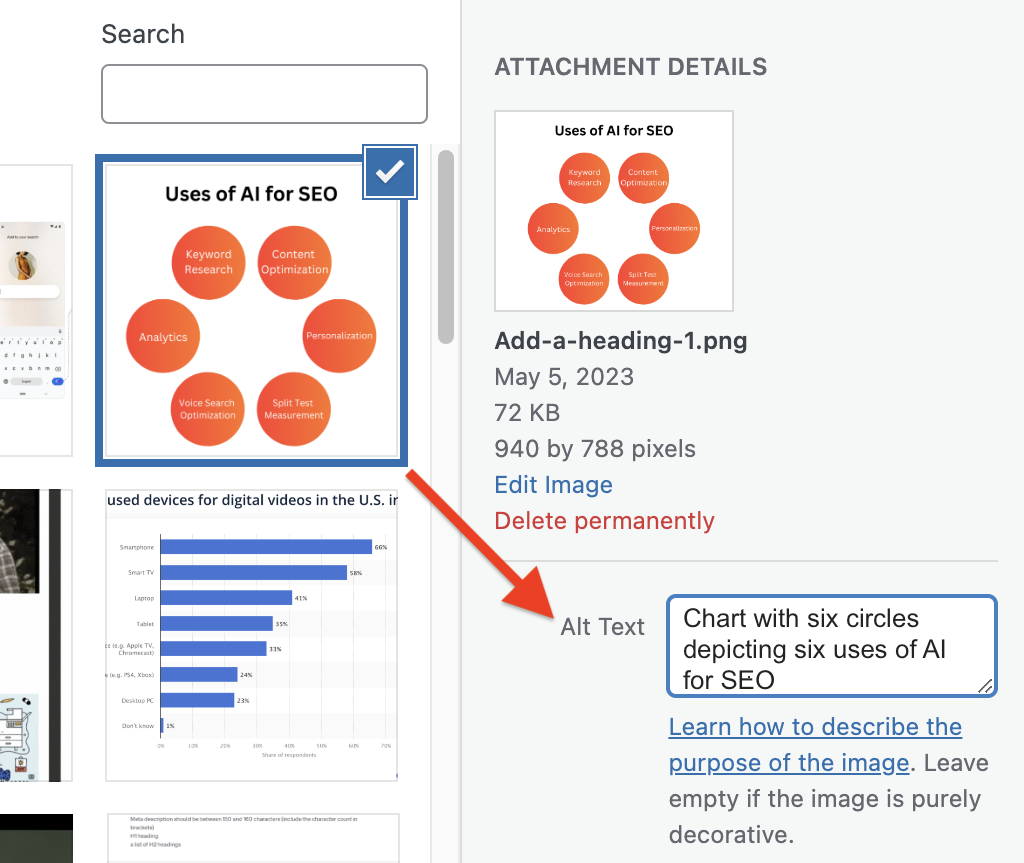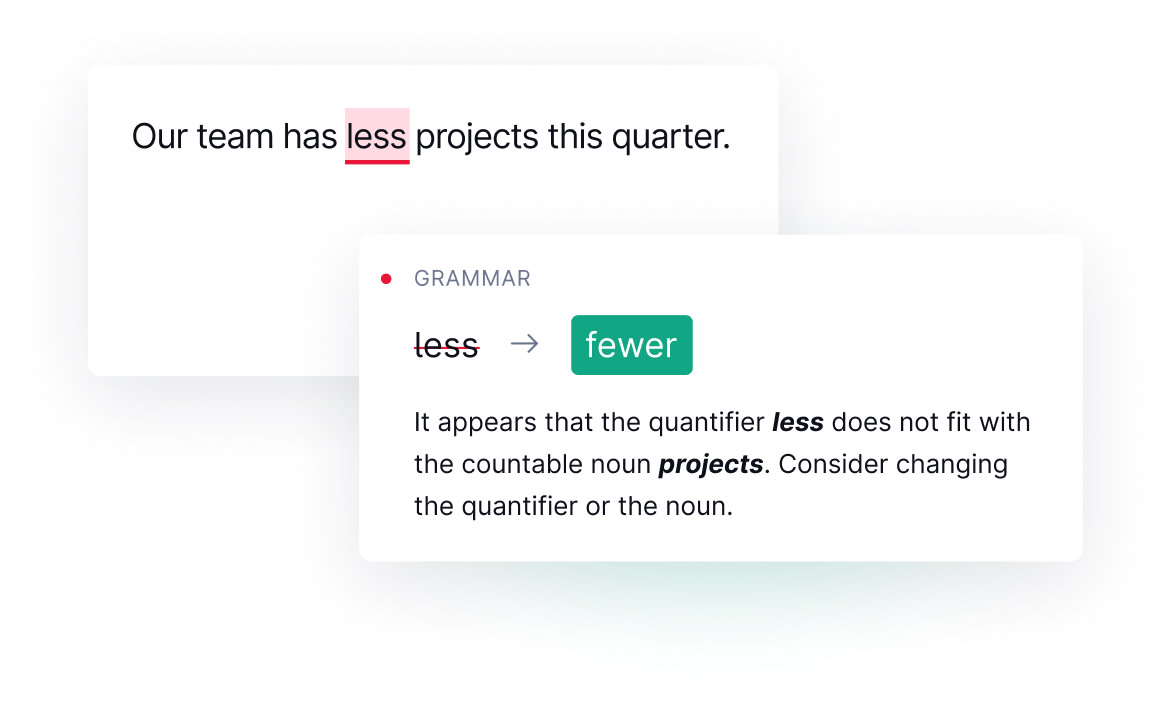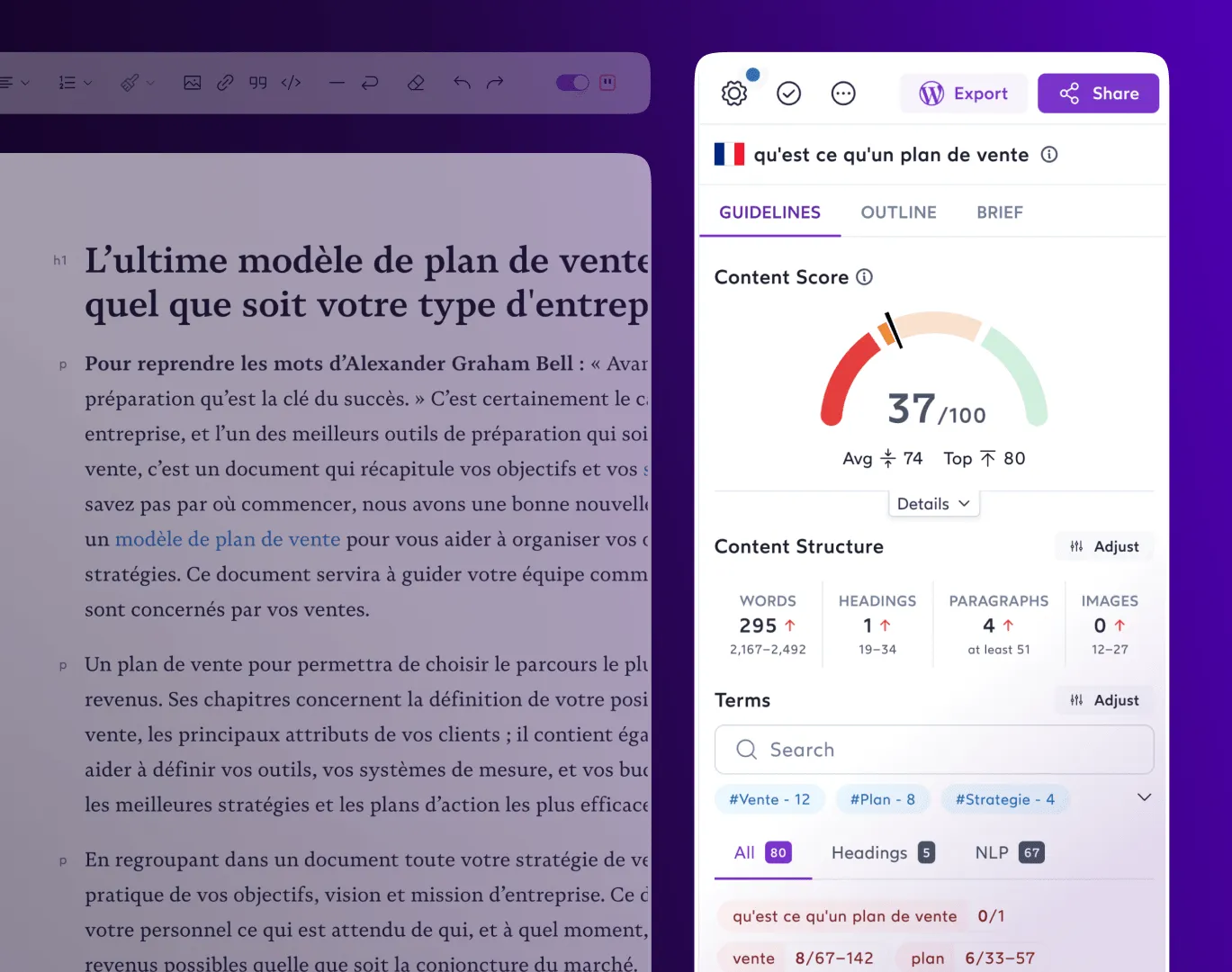The year is almost half over (where did it go??) and there’s been an explosion of SEO innovation for companies, both large and small.
As SEOs, we must have our finger on the pulse of all things new related to website rankability. That’s why we’ve assembled some of the most prominent enterprise SEO trends we’ve noticed for this year.
So, if you’re looking to stay ahead of the curve and drive growth for your enterprise, read on to discover the SEO trends that matter most this year and beyond.
8 Enterprise SEO Trends You Can’t Ignore
From AI-generated content to ADA compliance to Google multisearch, we’ll cover the SEO strategies that can help you improve your enterprise website’s search engine ranking and increase your online visibility.
Trend #1: Image Optimization
Search engines are getting continually more sophisticated in their ability to understand image content, including alt tags and captions. Properly optimizing images and graphics on your site can improve search visibility.
For that reason, it’s wise to apply the following actions to your image content to help make the most out of them:
- Use descriptive filenames: Give your images descriptive filenames that accurately describe the content of the image. Avoid using generic filenames like “IMG001” or “photo1.jpg” as they provide no context to search engines. For example, if you have a screenshot showing the inside of a service platform, try naming the file after the specific view that the screenshot depicts, such as “platform_home.”
- Compress images: Large image files can slow your website’s loading speed, negatively impacting SEO. Try compressing images to reduce file size without compromising image quality.
- Use relevant image titles: Use relevant titles for your images that accurately describe their content. This not only helps with search engine optimization but also improves the accessibility of your website for visually impaired users who use screen readers.
- Use image sitemaps: Including your images in an image sitemap can help search engines index them more efficiently. Be sure to update your image sitemap regularly as you add or remove images from your website.
- Use responsive imagery: Responsive images adjust to the device size they’re being viewed on, which can improve user experience and SEO.
- Use relevant alt tags: Alt tags provide context to search engines about the content of an image. Use descriptive alt tags that accurately describe the image. They can also be a convenient way to weave in relevant keywords.

Dive Deeper: Overlooked SEO: Optimizing Images and Video for Search
Trend #2: AI-Generated Content
It feels like for decades the biggest buzzwords surrounding AI-integrated marketing technology were “machine learning” and “AI-driven automation.” There was this prophesied new age on the horizon that artificial intelligence would augment the core procedures and tactics that marketers employ to optimize digital marketing campaigns as well as eliminate tedious tasks.
Well, the machines have learned, and they’ve evolved into the newest application of AI in enterprise SEO.
Natural language processing tools are getting increasingly useful for content optimization. These tools can be cleverly used to supplement a brand’s SEO strategy with original material. ChatGPT and Jasper.ai can aid marketers in the creative process for several categories of content, especially SEO.
Some examples of AI-generated content include:
- Article outlines
- Product descriptions
- Social media posts
- Ad copy
- Email marketing
- FAQs
Often, these tools can make content nearly indistinguishable from human-made content, making it a favorable option for quickly producing it in large volumes:

Platforms like ChatGPT aren’t fully substitutable for human-made content as many of them aren’t yet able to create new information. ChatGPT, for instance, can only access information from before 2021. Much of the material we’re given from generative AI is repeated information presented in a new way.
Beyond just written content, the rapid popularization of AI-generated art through apps like Dall-E has made the process of image content creation immensely simple. It hasn’t completely nullified the need for graphic designers, but it’s improving each month.
Here’s a famous example of one of the AI-generated images created by Dall-E:

On the one hand, these advancements may seem controversial, uninspired, irrelevant or devoid of human expression and expertise. On the other hand, it has undeniably opened the door for many brands to build robust and consistent content output that will escalate their digital presence beyond what they used to be capable of producing.
AI-generated content is still (and will continue to be) experimental. The trick to leveraging it beneficially for your brand right now is knowing its limitations and how its capabilities can aid your content development.
Many content marketers are using tools like ChatGPT to build frameworks for ideas and then expound on those idea paths while also fact-checking and adjusting for brand voice. With some finesse, they’re able to ask these generative text tools to get them partway there by crafting the right prompts.
Dive Deeper: How to Use ChatGPT for Powerful Content Creation (+ Examples!)
Trend #3: AI-Assisted Content
Riding the coattails of purely AI-generated content is the likely more viable form of AI-assisted content. It’s appropriate to separate AI-generated content from AI-assisted content, of which SEOs can use many tools to complement their efforts.

A basic example of an AI assistant is the common and thoroughly loved tool Grammarly, which many people rely on to keep their writing tidy:

But it goes well beyond that. For the same reason writers adore Grammarly, marketers can benefit from a swath of AI-led tools to aid them in virtually any task.
Here are a few examples:
- DeepL: Useful in translating documents and page text to other languages
- Seventh Sense: Personalized email cadencing software that can determine ideal times to reach out to your audience
- MarketMuse: Useful for optimizing long-form content and page copy on websites for SEO
- INK: Useful for producing AI-derived written content based on your specified criteria along the same lines as Surfer.
- Surfer SEO: Helps content writers optimize content for Google’s SERPs (which may or may not have been used for this very article you’re reading)

It’s not possible to cover all the options of AI-integrated software that can aid enterprise-level SEO activities, but know that there are a ton out there, and there are likely several that can benefit your brand’s SEO. You can learn about similar tools over at Influencer Marketing Hub.
These tools can be used to generate headlines, research keywords and identify gaps in content. AI-assisted content can lead to higher-quality content that is more likely to rank well in search engines.
Dive Deeper: 20 Paid & Free SEO Tools That Will Improve Your Ranking
Trend #4: Quality Backlinks and Link Building
A mainstay SEO trend and no less vital today than any other topic we have covered. It is increasingly important to continue focusing on creating high-quality content that is valuable and relevant to your target audience.
This will attract natural backlinks from other websites that find your content useful and informative. Additionally, you can reach out to other websites in your industry and request a backlink if you have content that would be valuable to their audience.
It’s still crucial to avoid tactics such as buying backlinks or participating in link schemes, as these can result in penalties from search engines and harm your website’s ranking.
Instead, focus on creating valuable content and building relationships with other websites in your industry to earn high-quality backlinks naturally.
Dive Deeper: How – and Why – to Build a Backlink Portfolio
Trend #5: Google Multisearch
Google Multisearch is a feature in Google search results that shows various types of content all in one place. So instead of just seeing a list of text-based search results, you might also see images, videos, news articles and more, all on the same page.
For example, if you search for local landscaping services, you might see a mix of text-based results like articles and service listings, as well as images and videos related to landscaping services. It is a multi-formatted way of presenting curated content based on a user’s search intent.
This tool is designed to provide a more comprehensive and interactive search experience, allowing users to easily find the information they’re looking for across a range of content types.
Dive Deeper: What Is Web 3.0? The Future of the Internet
Trend #6: Technical SEO
So far, the enterprise SEO trends we’ve covered have been mostly focused on on-page and off-page SEO. However, many technical SEO practices from past years remain wildly crucial for this year:

SEOs should communicate with their developers to maintain proper backend website health to satisfy functional standards for search engines, such as:
- Mobile-friendly design: Make sure your website is mobile-friendly and responsive so it looks and works well on all devices.
- Site speed optimization: Optimize your website’s loading speed to provide a better user experience and improve search engine rankings. You can achieve this by optimizing image sizes, minifying CSS and JavaScript files and leveraging browser caching.
- Proper use of header tags: Use header tags (H1, H2, H3, etc.) to structure your content and make it easier for search engines to understand the hierarchy of your website’s content.
- Clean website structure: Ensure that your website has a clear and intuitive structure that makes it easy for users and search engines to navigate.
- Internal linking: Use internal linking to connect related web pages and help users and search engines navigate your website’s content.
- XML sitemap: Create an XML sitemap that lists all the pages on your website to help search engines crawl and index your SEO content more effectively.
- Schema markup for structured data: Implement schema markup to help search engines better understand the content and structure of your website, leading to improved position rankings and increased visibility in search results.
- HTTPS encryption: Use HTTPS encryption to secure your website and improve search engine rankings. Search engines want to affirm that your site is safe and won’t abuse or compromise sensitive user data once they arrive.
Dive Deeper: How to Fix 15 Common On-Site Technical SEO Issues
Trend #7: ADA Compliance
It’s not overtly stated that Google prioritizes websites that are compliant with ADA standards. But it’s reasonable to assume that ADA functionality on websites will improve user experiences and, therefore, positively impact compliant websites in search rankings:

Many websites adapt their UI/UX functionality to appeal to a neurodivergent crowd. We expect to see Google begin to favor such sites as it becomes more prevalent.
Trend #8: Video Marketing
Well-produced video marketing is a key trend that hasn’t slowed down. It might feel like we should have reached a point of critical mass with the frequency of video content put out on the web, but we’re not there yet.
On the contrary, video is a staple component of a website’s searchability. With YouTube being the second-most used search engine after Google, there’s no shortage of demand for video content, making it a highly potent factor for your website’s rankability.
We’re also seeing the repurposing of existing video content by splicing long-form video content into small snippets that are more applicable for different placements. A 5-minute product overview might be paired down into short clips optimized for YouTube Shorts, TikTok, and Instagram.

Incorporating video content into your website can lead to higher user engagement and provide valuable information to your audience. It’s simply another form of content to deliver your brand’s messaging. It should be considered as seriously as written and graphical or image content.
Closing Thoughts on Enterprise SEO Trends for 2023
As always, the target keeps moving with enterprise SEO trends, and methods in 2023 have been no exception. After all, the year is only about half over, leaving much to be discovered.
Sure, we have some core web vitals that continue to prove effective, but the means by which we satisfy those base standards are getting faster and more streamlined.
Remember that no matter how much AI-driven tools permeate SEO techniques, it’s not a 1:1 substitute for human insight, personality and ingenuity. At least not yet, anyway.
If you’re ready to grow your enterprise this year, Single Grain’s enterprise SEO experts can help.👇



